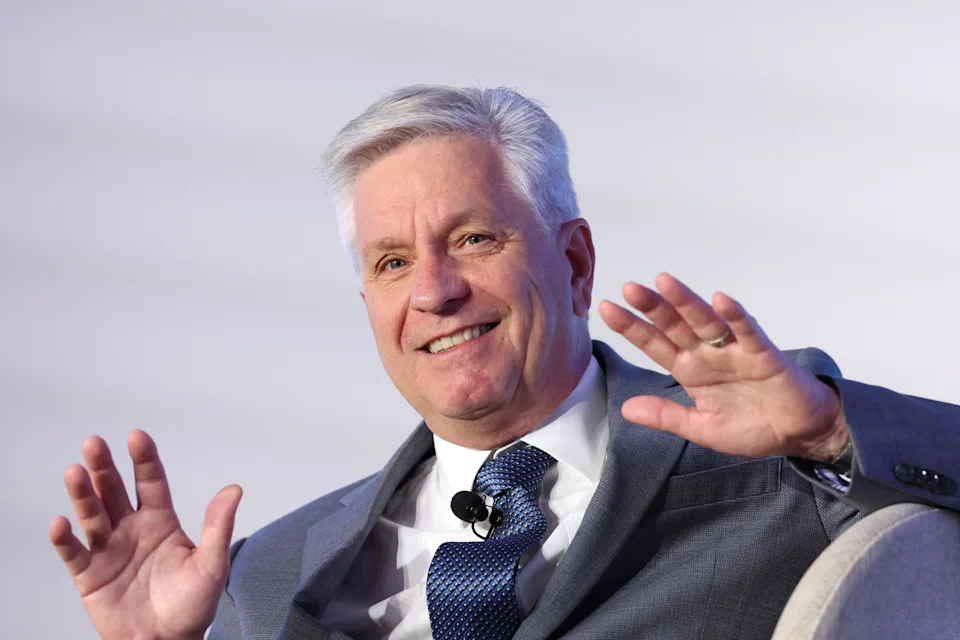Federal Reserve governor Chris Waller said Thursday he is in favor of trimming interest rates by another quarter percentage point at the end of this month, but after that he wants to move cautiously.
The new comments from a top candidate to replace Fed Chairman Jerome Powell in 2026 implies Waller may be inclined to hold rates steady to wait and see how the economy and the labor market play out.
Waller sees a conflict right now between data showing strong growth and a weakening job market.
“Something’s gotta give—either economic growth softens to match a soft labor market, or the labor market rebounds to match stronger economic growth,” Waller said in a speech in New York entitled “Cutting Rates in the Face of Conflicting Data.”
“Since we don’t know which way the data will break on this conflict, we need to move with care when adjusting the policy rate to ensure we don’t make a mistake that will be costly to correct.”
Waller’s comments of caution come as one of his fellow policymakers appointed by President Trump, Fed governor Stephen Miran, called again Thursday for a 50-basis point rate cut at the next policy meeting on Oct. 27-28 and said that renewed trade tensions pose a risk to the economic outlook.
Miran, who isn’t worried about inflation from tariffs, wants to get to a neutral level on interest rates — a level designed to neither spurs nor slows growth.
This latest sign of division within the Fed comes as Waller, who had been one of the Fed’s leading doves since summer, pulls back a bit on his insistence to cut rates going forward.
It coincides with his consideration as the next chair of the Fed. Waller is now on a short list of five people being considered by Treasury Secretary Scott Bessent, who is leading the search process and will make a final recommendation to Trump after Thanksgiving.
Markets are pricing in a rate cut at the next meeting and the December meeting as a done deal, but Waller’s comments also signal that a cut in December may not be a slam dunk depending on which way the data falls in the coming weeks and months.
The government shutdown is complicating matters, as Fed officials have not received the September jobs report, nor retails sales. Inflation as measured by the Consumer Price Index is also delayed until next week.
Waller is relying on contacts to assess the job market and inflation. Employers have indicated to him that there was some further softening of the labor market last month, while retailers reported solid spending.
The Fed’s Beige Book, a compilation of anecdotal evidence across the country, released Wednesday also painted a weaker picture of the job market.
Demand for workers was muted, as more employers reported lowering head counts through layoffs and attrition, citing weaker demand, elevated economic uncertainty, and in some cases, increased investment in artificial intelligence.
At the same time, supply of workers for sectors ranging from hospitality to agriculture, construction, and manufacturing were strained due to changes to immigration policy resulting in a lower number of immigrants.
When it comes to inflation, Waller noted that core goods inflation is now running a half a percentage point higher, and research by Federal Reserve Board staff and others indicates that most of this is due to the effects of tariffs.
He said he expects the tariff effects on inflation to fade in the coming months, and that what matters for setting interest rates is the rate of inflation outside of tariffs.
Waller reiterated he is more concerned about the job market than inflation because while he thinks tariffs will lead to permanently higher price levels it will only lead to temporary inflation – a one-time increase in prices.
“With market-based measures of longer-term inflation expectations apparently well anchored and a soft labor market keeping down wage demands, I judge that inflation is on a path to a sustained level of 2 percent and should not itself be a barrier to moving monetary policy toward a more neutral setting,” said Waller.
Looking ahead after the Fed’s meeting at the end of this month, Waller says if GDP growth holds up or accelerates and the job market recovers, then it might indicate the pace of cutting rates should be slower than expected.
“What I would want to avoid is rekindling inflationary pressure by moving too quickly and squandering the significant progress we have made taming inflation,” he said.

